The mockingbird is most famous for the mimicry which gives this songbird its name. Mockingbirds are known to mimic the songs and calls of an array of other birds including bluebirds, sparrows, wrens, and jays. Some mockingbirds even “mock” the sounds of other animals like crickets or cats, and may even mock human-produced noises such as car alarms or squealing tires. Native only to North America, it is easy to see why the mockingbird has become such an important symbol within the United States. Found in a number of Native American myths and stories, mockingbirds have had a sizable impact on American literature, culture, and identity. (1)
Mockingbird Symbolism and Meaning
Mockingbirds chiefly symbolize imitation. This is because of their “mocking” habit. The Northern Mockingbird’s scientific name is “mimus polyglottis” which means “many-tongued mimic.” The mockingbird represents learning, memorization, plagiarism, and music. (2)
Mockingbirds are socially monogamous and go out of their way to choose a partner who aggressively defends the nest and is an active and devoted parent. Thus, mockingbirds may represent communication, stability, defense, protection, parenthood, or commitment.
The Northern Mockingbird is the state bird of several U.S. states. Arkansas, Florida, Mississippi, Tennessee, and Texas all honor the Northern Mockingbird as their state bird. For Texas in particular, the Northern Mockingbird’s intense protection of its home was intended to symbolize the Texan spirit. (3)
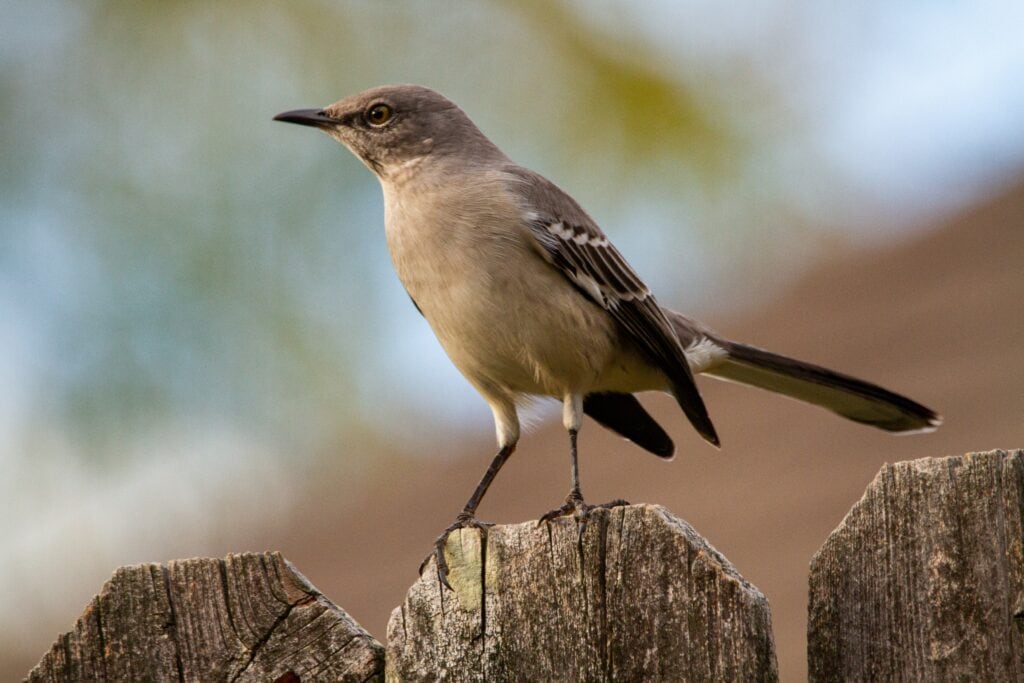
Mockingbirds are well known for singing long into the night. This is especially common when the moon is bright, but during the seasons when mockingbirds sing the most, late night songs are quite common. A mockingbird’s song may represent the tranquility or isolation that nightfall brings.
One of the most celebrated pieces in the entire canon of American literature is Harper Lee’s To Kill a Mockingbird. This novel explores life in the South during the early twentieth century from the perspective of a young girl nicknamed Scout. Frequently read in public schools and cherished for its nuanced look at racial themes, To Kill a Mockingbird is so-named because mockingbirds play an important symbolic role within the book. To Kill a Mockingbird is a story about childhood and a young child’s perspective on the injustices of the adult world. The mockingbird represents innocence.
“Mockingbirds don’t do one thing but make music for us to enjoy. They don’t eat up people’s gardens, don’t nest in corncribs, they don’t do one thing but sing their hearts out for us. That’s why it’s a sin to kill a mockingbird.”
— To Kill a Mockingbird by Harper Lee (4)
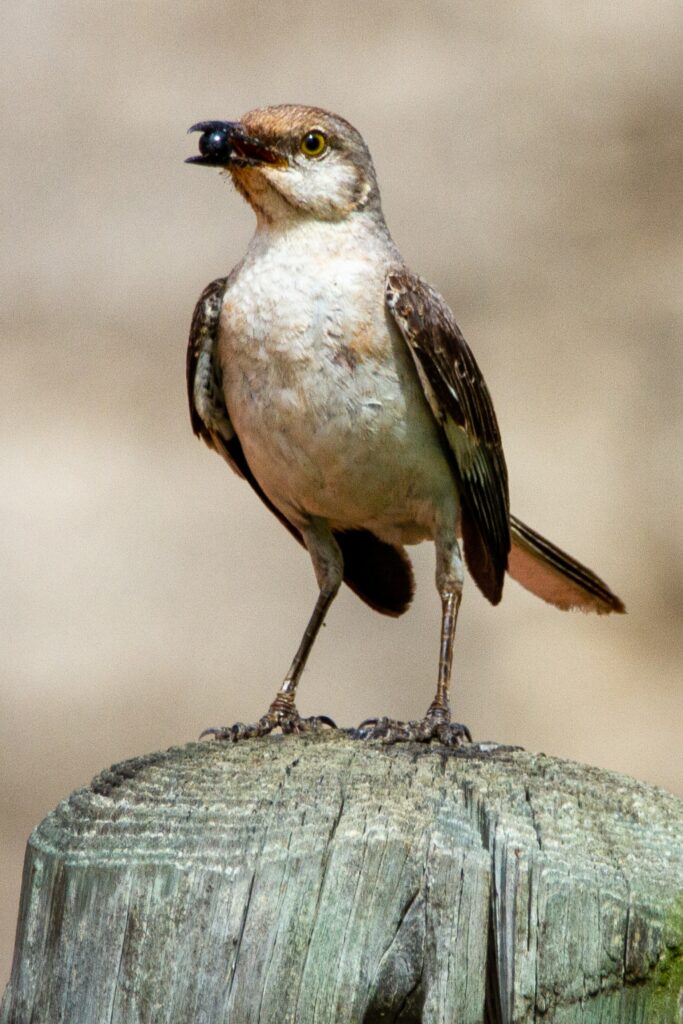
Mockingbirds are so important in American culture, in fact, that Thomas Jefferson, a founding father and the third president of the United States, revered them. Mockingbirds were commonly kept as pets during Jefferson’s time and he was very proud of the singing abilities of his pet mockingbird, Dick. Dick was even allowed to fly freely through the home and would take food directly from Jefferson’s lips. (5)
Mockingbird Native American Symbolism
Mockingbirds appear in Native American cultures in a wide variety of different forms. Various sources state that many tribes associate these birds with intelligence. Such sources even include accounts of traditions wherein the heads or hearts of mockingbirds would be fed to young children with the expectation that this would make the children grow up to be clever. (6)
Some traditions cast the mockingbird as the guardian of the dead. Perhaps the fierce protective behavior of these birds contributed to their perception as a guardian spirit.
Mockingbird Christianity Symbolism
Mockingbirds are only found in North America and, as such, have not played a major role in the development of Christianity and Christian imagery. One major Christian theme which may connect with the mockingbird is deception. The devil is often characterized as a “silver-tongued” liar who will take on any form to drive people to sin. The imitations of the mockingbird could be thematically connected with this idea, however these birds are obviously harmless and more accurately reflect the beauty and complexity of nature.
Mockingbird Celtic Symbolism
Mockingbirds are not found in Europe, but Celtic mythology does include a lot of meaningful songbirds. The mockingbird might be connected, for example, with the birds of Rhiannon. Rhiannon is an important goddess who embodies queenship, otherworldliness, and feminine power. Rhiannon entertains visitors to the realm of the supernatural by allowing her choir of songbirds to sing for them. (7)
Mockingbird in Dreams
Dreaming of a mockingbird might indicate a number of things depending upon the dream. Dreaming of hearing a mockingbird, for example, could indicate a sense that things are not what they seem. While you might hear the sounds of a frog, a wren, or a car alarm, the mockingbird has tricked you with its mimicry skills. This might be a reminder to look deeper into things and not believe everything that you hear at face value.
Dreaming of a mockingbird’s nest might indicate protection or defense. Perhaps such a dream is reminding you to stand your ground against the forces that threaten you. No matter what, focus on protecting your peace.
A mockingbird dream might also represent self-expression. Dreaming of a mockingbird could remind you that your voice is a gift, and one that you are free to use to your heart’s content.
Mockingbird Encounters and Omens
A mockingbird encounter is a fairly common experience throughout much of the United States. These birds are remarkably well adapted for surviving and thriving in urban and suburban environments. For this reason, a mockingbird encounter may simply act as a reminder to appreciate the adaptability and fierce beauty of the wildlife that coexist within human habitats.
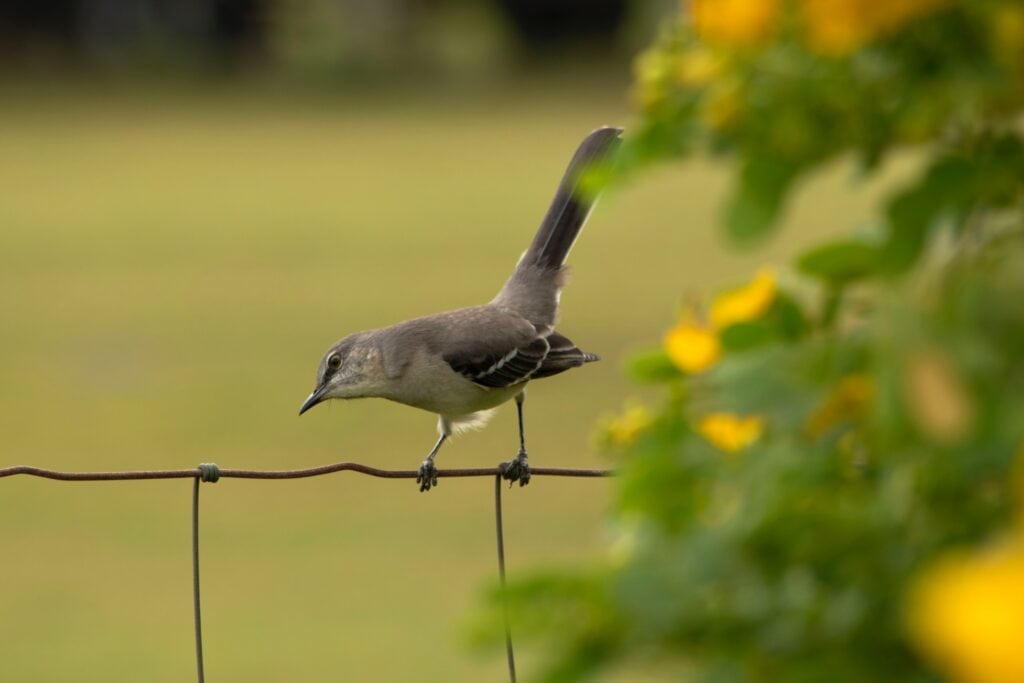
Hearing a mockingbird singing might indicate one’s desire to fit in by imitating others. Make sure that you sing your own unique song along with the songs that you choose to repeat.
Encountering a mockingbird can be a sign of good luck and protection with regards to one’s home. Mockingbirds are intense nest defenders and can often even recognize and reject nest parasite eggs like cowbirds. (8)
Mockingbird in Mythology & Folklore
Mockingbird folklore is limited to the Americas, however Native American folklore has much to say about these charismatic birds. The following are just a few Native American mockingbird myths.
Native American Mythology:
One Mayan legend describes how the mockingbird became such a great singer whilst the cardinal kept a rougher voice. In this story, the cardinals were once a wealthy family amongst birds and their daughter even had her very own maid. That maid was a young mockingbird. The cardinal’s father wanted his daughter to become a beautiful singer so he hired a teacher for her. The young cardinal was lazy and vain, however, and she never paid attention during lessons. Her maid, the young mockingbird, would listen carefully to her master’s singing coach and would practice by herself in the woods. One day, the cardinal decided that his daughter would put on a concert for all of the birds. Panicking, the young cardinal formed a plan. She knew her maid could sing, so she had her hide in a hollow tree and sing the notes while the cardinal pretended. Their scheme was discovered, but to the mockingbird’s surprise, everyone was so pleased with her song that they forgave the silly trick. The cardinal never learned to sing, but the mockingbird became the greatest singer of all. (9)
According to another legend, the mockingbird once lined up alongside all of the other birds to receive colors and songs from the creator. The creator painted each bird one by one in beautiful shades of blue, green, yellow, and red. The raven was impatient and used its big body to push its way to the front of the line. When he burst to the front, the raven tripped and fell in some black paint. As punishment for bullying his way to the front, the creator left the black paint on the raven’s feathers and only taught him to squawk. The mockingbird was the very last in line and waited patiently. When his turn finally came, the only colors left were black and white. As a reward for waiting patiently, the creator gave the mockingbird a pattern of pretty gray feathers with white under his wings. Then, he taught the mockingbird all of the other bird’s songs on top of his own. The mockingbird’s patience was rewarded with a gift for singing and learning new songs. (10)
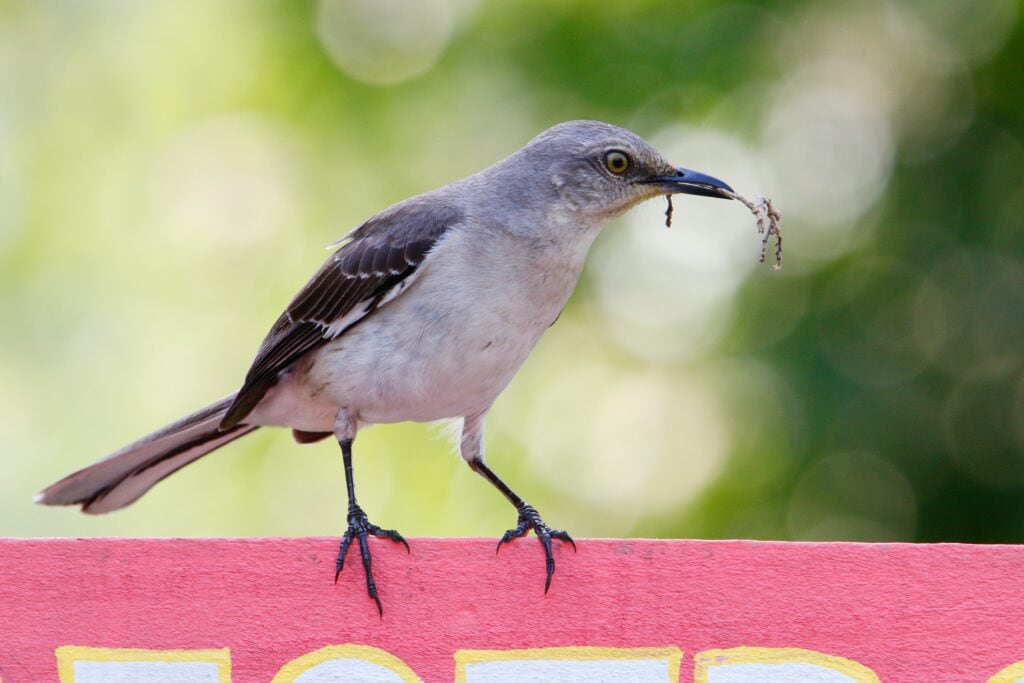
Mockingbird Spirit Animal
If the mockingbird is your spirit animal then you are likely a creative and expressive person who loves to learn. The mockingbird spirit animal is driven by curiosity and loves learning new things about its surroundings. Although the mockingbird spirit animal tends to be more of an observant personality, one this spirit animal feels comfortable, it can be very social and even brash.
People with the mockingbird spirit animal tend to enjoy quiet activities, like people-watching and reading, almost as much as they like being the center of attention and entertaining others. The mockingbird spirit animal loves to connect with others through creative expression.
People with the mockingbird spirit animal tend to be honest to a fault and do not back down from a challenge. The mockingbird spirit animal fiercely defends the things that matter to it. People might find someone with the mockingbird spirit animal to be abrasive, but this is just because this spirit animal does not sugarcoat its feelings or intentions.
Mockingbird Totem Animal
The mockingbird totem animal is associated with vigilance and protection. For the mockingbird, the nest is a sacred space that must be served and protected at all costs. Mockingbirds are monogamous, but will abandon a mate who fails to contribute to the nest or engage as a parent. People with the mockingbird as their totem animal give their homes and families everything that they’ve got.
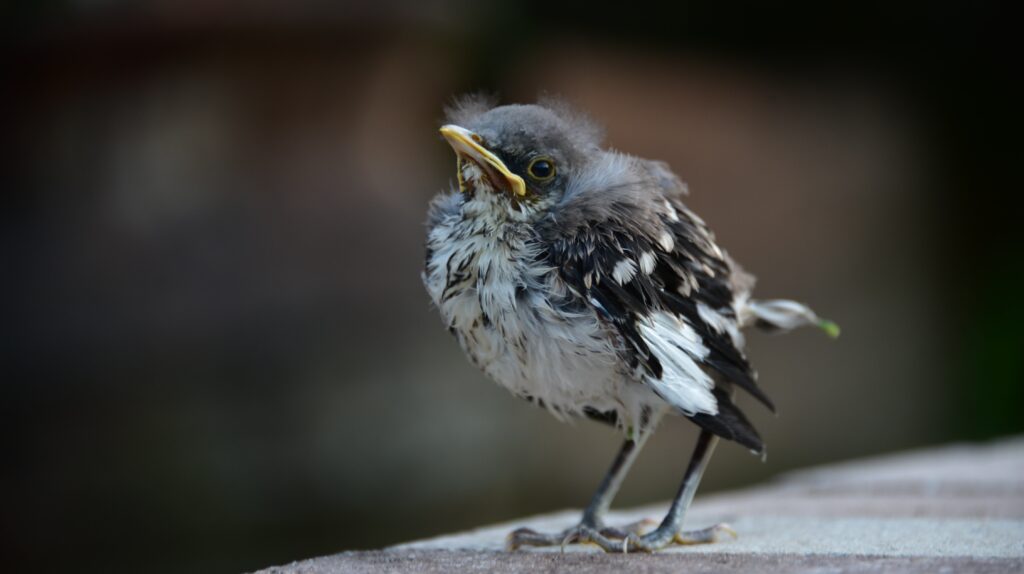
The mockingbird totem animal may also be connected with courage. When push comes to shove, the mockingbird doesn’t hesitate to harass or threaten larger birds or animals that snoop around its nest location. With the most important thing in the world on the line, the mockingbird does not back down. People with the mockingbird totem animal will likely relate to this ferocity and sense of singular purpose. The mockingbird totem animal abhors injustice and will not stand for it.
Mockingbird Power Animal
The mockingbird power animal is, predictably, connected with voices. People with the mockingbird as their power animal command their voice and understand its importance as a tool. A voice can build someone up, can heal wounds, can tear down enemies, and can negotiate a bright future for its owner. The mockingbird’s power allows you to fully grasp and harness the power of your voice and words.
In times of distress, the mockingbird power animal lends you the power to choose the right words. For consoling a hurt loved one, nailing a job interview, or sharing hard truths, the mockingbird power animal is a great ally.
Mockingbird Tattoo Meaning
A mockingbird tattoo can have a wide range of meanings. For Native American cultures, such a tattoo might represent intelligence, expression, patience, or the guardian of the realm of the dead.
For literature fans, a mockingbird tattoo might be chosen to represent innocence. It may also represent some of the important messages found within the pages of To Kill a Mockingbird.
A mockingbird tattoo might represent pride and patriotism for residents of Florida, Tennessee, Texas, Arkansas, or Mississippi.
Finally, a mockingbird tattoo might represent protection, creativity, courage, tenacity, imitation, or curiosity.
Conclusion
Mockingbirds are fascinating animals and there is much much more that could be said about them. The song of a mockingbird reflects this bird’s beauty while also highlighting the wealth of sounds and songs that make up its environment. In its own way, each mockingbird’s song is like a love letter to the neighborhood where that individual bird was raised. For that reason alone, I think mockingbirds are something very special.
